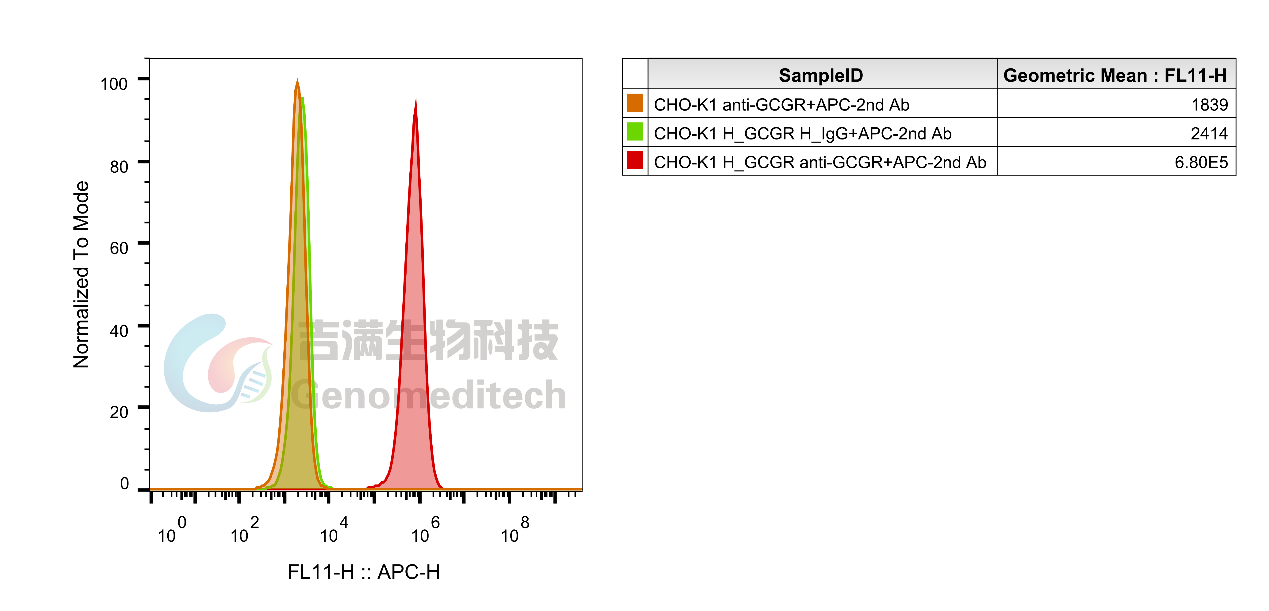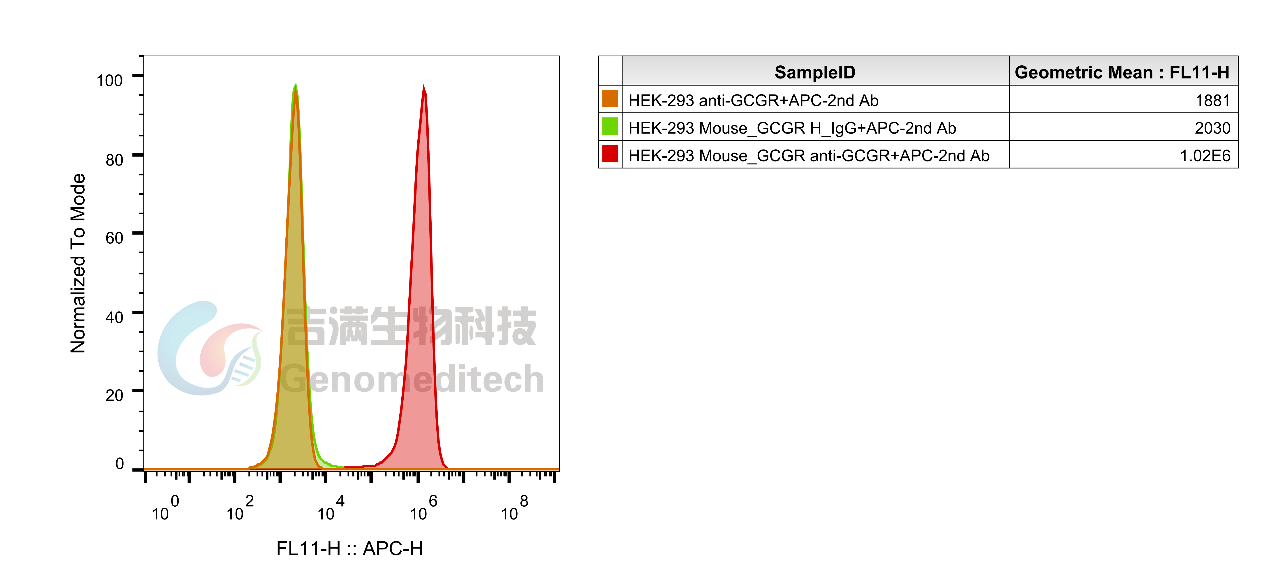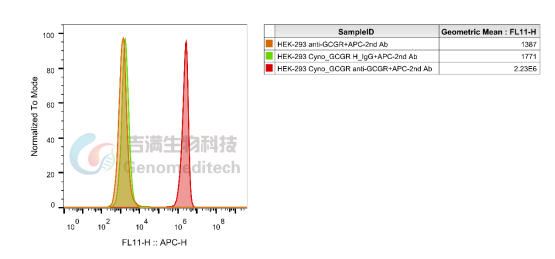Cat. No:GM-84555AB
Product:Anti-H_GCGR hIgG2 Antibody(volagidemab)
Cat. No:GM-84555AB
Product:Anti-H_GCGR hIgG2 Antibody(volagidemab)
GM-84555AB-10 10 μg
GM-84555AB-100 100 μg
GM-84555AB-1000 1mg
Species Reactivity Human
Clone GCGR
Source/Isotype Monoclonal human IgG2, κ
Application Flow cytometry
Specificity Detects GCGR
Gene GCGR
Other Names Glucagon R, GCGR,Glucagon receptor
Gene ID 2642(Human);14527 (Mouse)
Background The Glucagon Receptor (GCGR) is a G protein-coupled receptor primarily expressed in the liver, kidney, and intestines. It serves as the receptor for glucagon, activating the adenylate cyclase pathway to promote glycogen breakdown and gluconeogenesis in the liver, thereby raising blood glucose levels. In recent years, research on GCGR has been increasing, including the development of GCGR agonists or antagonists to regulate blood glucose levels, exploring the role of GCGR in insulin resistance, fat metabolism, and appetite regulation, among others.
Storage Store at 2-8℃ short term (1-2 weeks).Store at ≤ -20℃ long term. Avoid repeated freeze-thaw.
Formulation Phosphate-buffered solution, pH 7.2.
Endotoxin < 1 EU/mg, determined by LAL gel clotting assay



Cat. No:GM-84555AB
Product:Anti-H_GCGR hIgG2 Antibody(volagidemab)
GM-84555AB-10 10 μg
GM-84555AB-100 100 μg
GM-84555AB-1000 1mg
Species Reactivity Human
Clone GCGR
Source/Isotype Monoclonal human IgG2, κ
Application Flow cytometry
Specificity Detects GCGR
Gene GCGR
Other Names Glucagon R, GCGR,Glucagon receptor
Gene ID 2642(Human);14527 (Mouse)
Background The Glucagon Receptor (GCGR) is a G protein-coupled receptor primarily expressed in the liver, kidney, and intestines. It serves as the receptor for glucagon, activating the adenylate cyclase pathway to promote glycogen breakdown and gluconeogenesis in the liver, thereby raising blood glucose levels. In recent years, research on GCGR has been increasing, including the development of GCGR agonists or antagonists to regulate blood glucose levels, exploring the role of GCGR in insulin resistance, fat metabolism, and appetite regulation, among others.
Storage Store at 2-8℃ short term (1-2 weeks).Store at ≤ -20℃ long term. Avoid repeated freeze-thaw.
Formulation Phosphate-buffered solution, pH 7.2.
Endotoxin < 1 EU/mg, determined by LAL gel clotting assay


